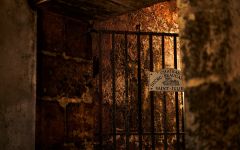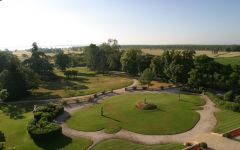Chateau Ducru-Beaucaillou 2020
-
Jeb
Dunnuck - Decanter
- Vinous
-
James
Suckling -
Robert
Parker




Product Details
Your Rating
Somm Note
Winemaker Notes
The style of 2020 is reminiscent of the academic 2010 but with a higher concentration of flavours and greater density of anthocyanins and tannins, underlined with the Ducru’s trademark freshness, giving an exquisite, succulent texture.
Blend: 81% Cabernet Sauvignon, 19% Merlot Noir
Professional Ratings
-
Jeb Dunnuck
Another legendary Ducru Beaucaillou in the making, the 2020 Château Ducru-Beaucaillou hasn't budged since release. Full-bodied, concentrated, and layered, it has incredible purity in its cassis and darker, almost blue fruits, some classic yet primary tobacco, graphite, and mineral notes, a dense mid-palate, and awesome length on the finish.
-
Decanter
An amazing Ducru, one of the wines of the vintage. Hugely persistent, chiselled and precise, yet succulent in its berry and cassis fruit character. The slate and pencil lead finish slows things down and grabs hold of you, I love the push-and-pull of the tannins. Always a confident and well-finessed wine, really flexing its muscles in 2020. 100% new oak barrels.
Barrel Sample: 98 -
Vinous
The 2020 Ducru Beaucaillou was picked from 11-30 September, matured entirely in new oak for an expected 18 months. It has a very succinct bouquet, not one that leaps from the glass and demands attention, but it unfolds slowly, at its own pace, revealing enticing scents of blackberry, cedar, iris petals and crushed stone. The palate is medium-bodied with sappy black fruit. There is a saline spine that runs through this Saint-Julien from start to finish, a quite enormous structure that exerts grip towards the finish. It is not a Ducru-Beaucaillou that goes out to deliver finesse or understatement, but one that you will have to cellar for a few years, pull out and have the superlatives ready. This is an immense and cerebral Ducru-Beaucaillou from Bruno Borie and his team. -Neal Martin
Barrel Sample: 96-98 -
James Suckling
Blackcurrants and blueberries with violets and crushed stone. Extremely aromatic. Full-bodied but very tight and reserved, with racy, almost steely tannins. Some subtle sweet fruit in the center palate. Great transparency and clarity. Super precision here. Vertical and polished.
-
Robert Parker's Wine Advocate
The 2020 Ducru-Beaucaillou unwinds in the glass with aromas of dark berries, pencil shavings, violets and pipe tobacco, all framed by creamy new oak. On the palate, it's medium to full-bodied, fleshy and concentrated, with a deep but tightly wound core that's still quite wrapped up in extract and oak tannin, even if it isn't quite as big-boned as its 2019 counterpart. It will require some patience. Best After 2030
Other Vintages
2022-
Jeb
Dunnuck -
James
Suckling - Decanter
-
Robert
Parker
- Vinous
-
Wine
Enthusiast -
James
Suckling -
Robert
Parker - Decanter
-
Jeb
Dunnuck
-
Jeb
Dunnuck -
Wine
Enthusiast -
James
Suckling - Decanter
-
Robert
Parker
-
Wine
Enthusiast -
Jeb
Dunnuck -
James
Suckling -
Wine
Spectator -
Robert
Parker - Decanter
-
James
Suckling -
Jeb
Dunnuck -
Robert
Parker -
Wine
Enthusiast - Decanter
-
Wine
Spectator
-
Jeb
Dunnuck -
James
Suckling -
Robert
Parker -
Wine
Enthusiast - Decanter
-
Wine
Spectator
- Decanter
-
Wine
Enthusiast -
Robert
Parker -
Wine
Spectator -
James
Suckling -
Jeb
Dunnuck
-
James
Suckling - Decanter
-
Jeb
Dunnuck -
Wine
Enthusiast -
Robert
Parker -
Wine
Spectator
- Decanter
-
Wine
Enthusiast -
James
Suckling -
Wine
Spectator -
Robert
Parker -
Jeb
Dunnuck
-
Wine
Enthusiast - Decanter
-
Wine
Spectator -
James
Suckling -
Robert
Parker
-
James
Suckling -
Jeb
Dunnuck -
Robert
Parker - Decanter
-
Wine
Spectator -
Wine
Enthusiast
-
Jeb
Dunnuck - Decanter
-
Robert
Parker -
Wine
Enthusiast -
Wine
Spectator -
James
Suckling
- Decanter
-
Jeb
Dunnuck -
Robert
Parker -
Wine
Enthusiast -
James
Suckling -
Wine
Spectator
-
Wine
Enthusiast -
Robert
Parker -
Wine
Spectator
-
Wine
Spectator - Decanter
-
Wine
Enthusiast -
Robert
Parker -
Wine &
Spirits
- Decanter
-
Robert
Parker -
Wine
Enthusiast -
Wine
Spectator -
James
Suckling -
Wine &
Spirits
-
Wine
Enthusiast -
Wine
Spectator -
Robert
Parker -
Wine &
Spirits
-
Wine
Spectator -
Robert
Parker -
James
Suckling -
Wine
Enthusiast -
Wine &
Spirits
-
Wine
Spectator
-
Wine
Enthusiast -
Wine
Spectator
-
Robert
Parker -
James
Suckling -
Wine
Spectator
-
Robert
Parker -
Wine
Spectator
-
Robert
Parker -
Wine &
Spirits
-
Robert
Parker -
Wine
Spectator
-
Robert
Parker -
Wine
Spectator
-
Robert
Parker
-
Robert
Parker
-
Robert
Parker
-
Wine
Spectator
- Decanter
-
Wine
Spectator -
Robert
Parker
-
Wine
Spectator -
Robert
Parker
-
Robert
Parker -
Wine
Spectator
-
Robert
Parker
-
Robert
Parker






Chateau Ducru Beaucaillou is named after the beautiful, large stones found in its unique wine-growing terroir. This exceptional ecosystem produces fine, elegant, tasty wines with a long finish - in short, archetypical Saint-Julien wines.
Perched on an exceptional site with incomparable views over the Gironde estuary, in the center of a hundred-year-old park, Ducru-Beaucaillou is a majestic, Victorian-style castle, which has, over time, become one of the great symbols of the Médoc. Unusual for Bordeaux, it is built directly above the barrel cellars, enveloping its owners, who have lived here for over sixty years.
Today, the estate is managed by the company Jean Eugène Borie SA, which is owned by Mrs Borie, her daughter Sabine Coiffe and her son Bruno-Eugène, CEO since 2003, the third generation of the Borie family to head the estate. There are very close links between this estate and the five families who have been its successive owners.
